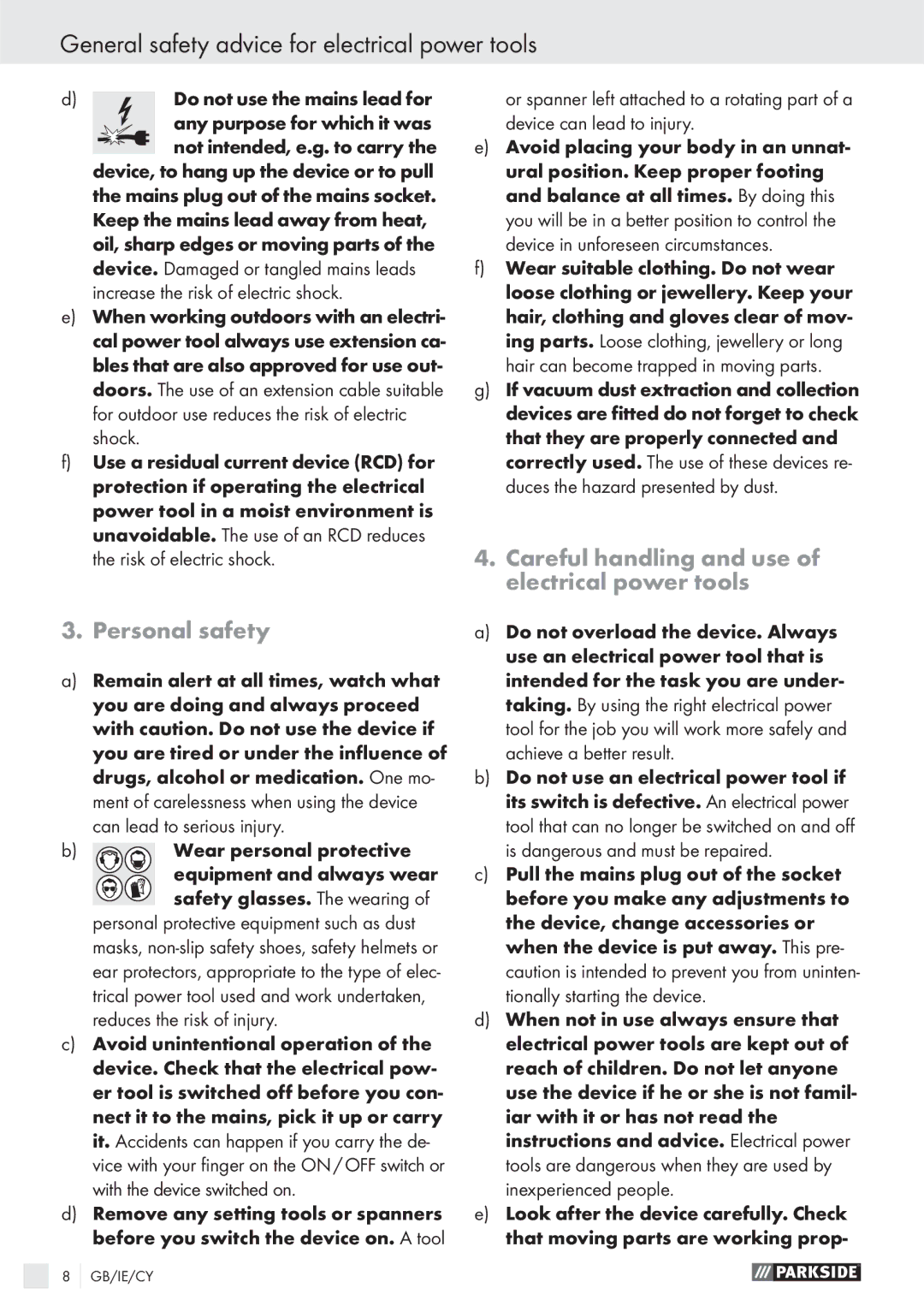
General safety advice for electrical power tools
d)Do not use the mains lead for any purpose for which it was
![]() not intended, e.g. to carry the device, to hang up the device or to pull the mains plug out of the mains socket. Keep the mains lead away from heat, oil, sharp edges or moving parts of the device. Damaged or tangled mains leads increase the risk of electric shock.
not intended, e.g. to carry the device, to hang up the device or to pull the mains plug out of the mains socket. Keep the mains lead away from heat, oil, sharp edges or moving parts of the device. Damaged or tangled mains leads increase the risk of electric shock.
e)When working outdoors with an electri- cal power tool always use extension ca- bles that are also approved for use out- doors. The use of an extension cable suitable for outdoor use reduces the risk of electric shock.
f)Use a residual current device (RCD) for protection if operating the electrical power tool in a moist environment is unavoidable. The use of an RCD reduces the risk of electric shock.
3. Personal safety
a)Remain alert at all times, watch what you are doing and always proceed with caution. Do not use the device if you are tired or under the influence of drugs, alcohol or medication. One mo- ment of carelessness when using the device can lead to serious injury.
b)Wear personal protective equipment and always wear safety glasses. The wearing of
personal protective equipment such as dust masks,
c)Avoid unintentional operation of the device. Check that the electrical pow- er tool is switched off before you con- nect it to the mains, pick it up or carry it. Accidents can happen if you carry the de- vice with your finger on the ON / OFF switch or with the device switched on.
d)Remove any setting tools or spanners before you switch the device on. A tool
or spanner left attached to a rotating part of a device can lead to injury.
e)Avoid placing your body in an unnat- ural position. Keep proper footing and balance at all times. By doing this you will be in a better position to control the device in unforeseen circumstances.
f)Wear suitable clothing. Do not wear loose clothing or jewellery. Keep your hair, clothing and gloves clear of mov- ing parts. Loose clothing, jewellery or long hair can become trapped in moving parts.
g)If vacuum dust extraction and collection devices are fitted do not forget to check that they are properly connected and correctly used. The use of these devices re- duces the hazard presented by dust.
4.Careful handling and use of electrical power tools
a)Do not overload the device. Always use an electrical power tool that is intended for the task you are under- taking. By using the right electrical power tool for the job you will work more safely and achieve a better result.
b)Do not use an electrical power tool if its switch is defective. An electrical power tool that can no longer be switched on and off is dangerous and must be repaired.
c)Pull the mains plug out of the socket before you make any adjustments to the device, change accessories or when the device is put away. This pre- caution is intended to prevent you from uninten- tionally starting the device.
d)When not in use always ensure that electrical power tools are kept out of reach of children. Do not let anyone use the device if he or she is not famil- iar with it or has not read the instructions and advice. Electrical power tools are dangerous when they are used by inexperienced people.
e)Look after the device carefully. Check that moving parts are working prop-
8
GB/IE/CY
